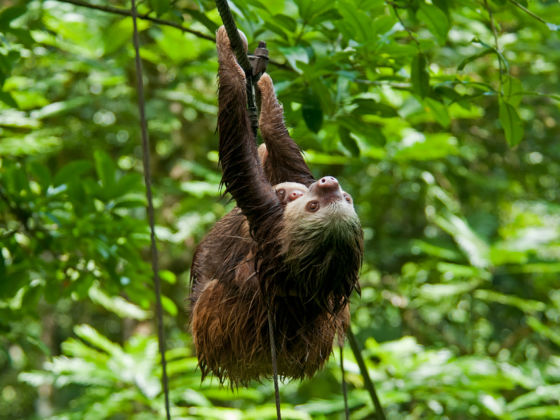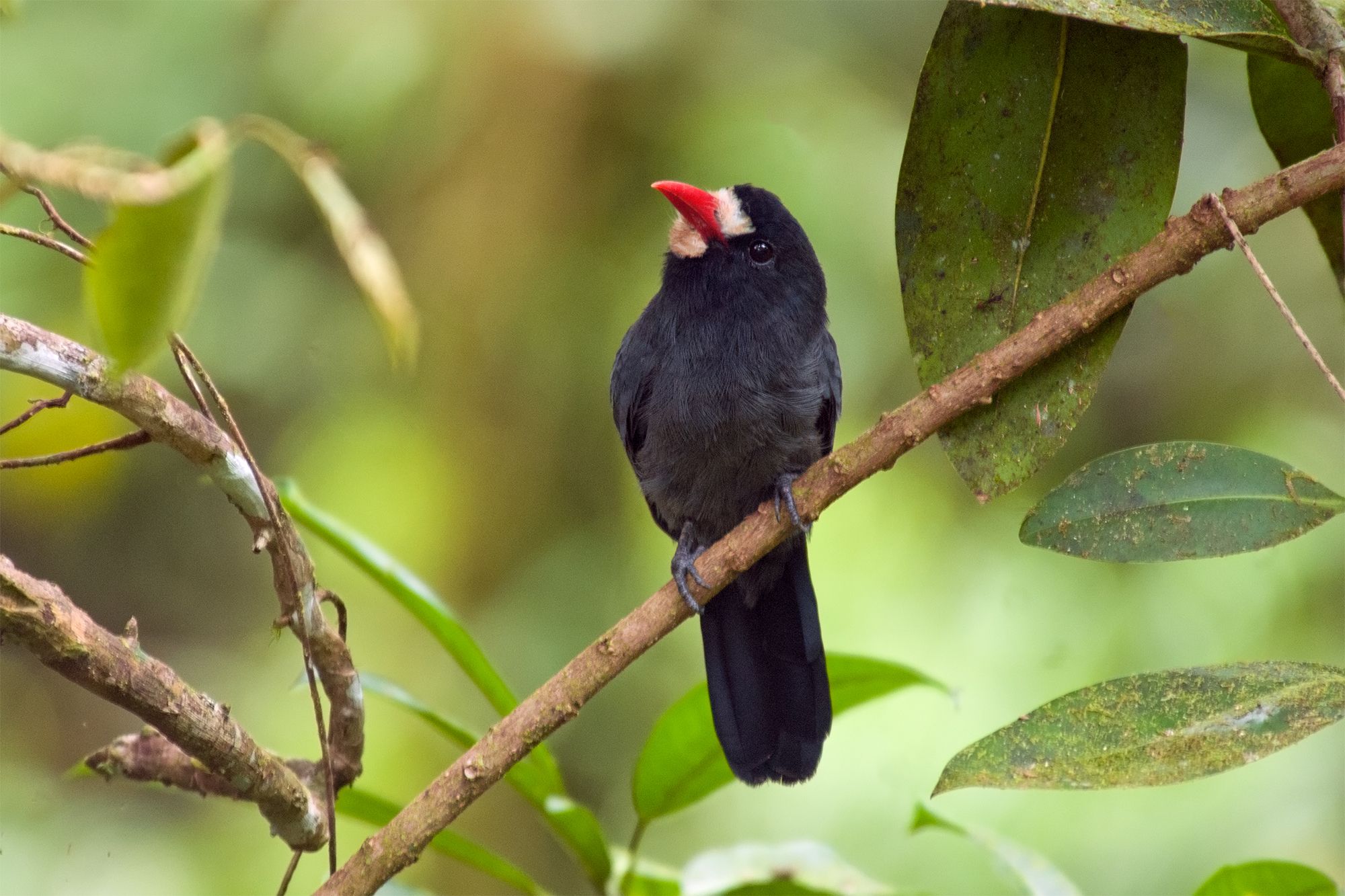It’s 8:30 in the morning, and the birds are out in force in Tirimbina Reserve in Costa Rica’s northern lowlands. The early morning rain put a damper on their dawn activities, and now dozens of species are busy in the canopy reclaiming what is left of the morning.
Standing on the 110-meter-long suspension bridge, 35 meters above the forest floor, we are right in the midst of all the action. We watch the adorable white-fronted nun birds, as they snatch insects in flight and return to their perches with the legs and wings of their prey still sticking out of their bright red beaks.


